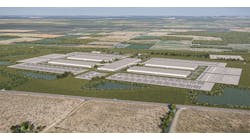There’s no denying the fact that recent advancements on the LED front have created upheaval in the design, distribution, installation, and maintenance arenas. Today, designers have an amazing array of options to choose from when it comes to luminaire types, control system configurations, and control devices. Distributors and wholesalers are scrambling to figure out how best to position themselves in a market that’s changing at such a rapid pace, and one that’s so different from the traditional lighting channel. Installation contractors face challenges in the areas of working with proprietary/open control systems, navigating product life/warranty issues and just trying to figure out how to remain a player in this new smart lighting and data-driven world.
In preparation for this year’s Lightfair International Show, to be held May 8-11 in Philadelphia, we’ve pulled together several lighting articles in support of our Lighting & Control themed issue this month. Here’s a sneak peek at those three articles.
Our cover story focuses on the topic of Lighting as a Service (Laas). Initially developed as a way to get around the high initial costs associated with LED lighting equipment and system installations, this financial model allows building owners/facility managers to upgrade their lighting system with no capital outlay. The lighting service provider covers the initial cost of the project and its maintenance. The customer funds the lighting upgrade through cost savings realized with a more energy-efficient lighting system via a lease contract. A recent research report on this subject suggests this market is ripe for expansion. Are you ready to be a player in this market?
We’ve also created a short “look-ahead” article for you that discusses some trends taking place in the lighting sector. Senior Editorial Consultant Joe Knisley summarizes some technical advancements being made by manufacturers in the areas of higher lumen output and efficacy and light sources with high luminous density. He also discusses the development of spectra-tunable and dimmable LED fixtures for the fast-growing horticultural industry. In addition, he touches upon all of the work being done in the area of lighting control, including IoT-enabled devices, structured and zone cabling configurations, and various wireless communications solutions being tested and installed in all types of buildings and facilities.
Last but not least, Solid-State Lighting Technology Manager for the DOE, James Brodrick, presents the current state of the TLED market. After suffering through some early growing pains, this technology continues to improve and now appears to be a good option for many upgrade projects. As their performance steadily improves and their price point continues to drop, this product type will continue to pick up market share.
But the lighting coverage doesn’t stop here. My team members and I will be hitting the road in a few weeks and heading to Philadelphia to cover the show. This will give us additional opportunities to speak with the leading lighting manufacturers and suppliers in the industry. We’ll be covering everything from new product introductions to technical developments being discussed in workshops and speaker sessions. In fact, we’re going to produce a total of five “show daily” newsletters based on the happenings at this year’s show. So watch your email inbox closely over the next few weeks as we do our best to light a path forward in the fast-paced, ever-changing sector of the market.




